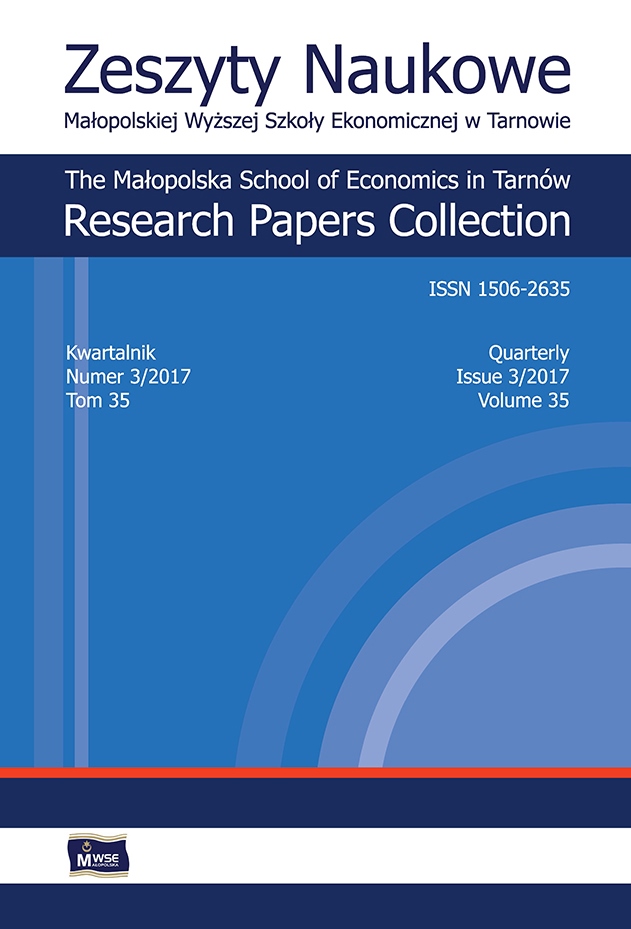Abstract
This present article is based on the research performed by one hundred and thirteen men working on the production line of at an automotive manufacturing plant. The selection of the research group was made after a biomechanical analysis of the film material in which the work had been recorded at the various plant sites. Workers from the assembly and foundry departments of the plant were examined. The workers from the selected production line sites participated in a survey. The obtained information regarded body position during work, knowledge of ergonomics, seniority and physical activity during leisure time. The spine pain was reported to be detailed in the cervical and lumbar sections. Numerous painful spinal disorders prompted the search for a link between pain and work experience as well as the age of labourers. There is a statistically significant difference between the mean pain intensity of the cervical and lumbar spine groups of seniority. Studies show that the respondents have no knowledge of the nature of overload lesions. The results of the analysis confirm the existence of the problem of overload lesions among employees of the automotive industry.
References
Brinckmann, P., Frobin, W., Biggemann, M., Tillotson, M., Burton, K. (1998). Quantification of overload injuries to thoracolumbar vertebrae and discs in persons exposed to heavy physical exertions or vibration at the workplace. Part 2: Occurrence and magnitude of overload injury in exposed cohorts. Clinical Biomechanics, 13, Suppl. 2, S1–S36.
View in Google Scholar
Bugajska, J., Konarska, M., Tokarski, T., Jędryka-Góral, A. (2007). Występowanie objawów zespołów przeciążeniowych kończyn górnych u pracowników różnych grup zawodowych. Reumatologia, 45(6), 355–361.
View in Google Scholar
Cwynar, E., Kosińska, M., Tomczyk-Socha, M. (2013). Analysis of notifications of suspicions of diseases caused by the way the job is performed in the context of pathologies regarded as occupational diseases. Medycyna Pracy, 64(3), 387–396.
View in Google Scholar
Depa, A., Drużbicki, M. (2008). Ocena częstości występowania zespołów bólowych lędźwiowego odcinka kręgosłupa w zależności od charakteru wykonywanej pracy. Przegląd Medyczny Uniwersytetu Rzeszowskiego, 1, 34–41.
View in Google Scholar
Holmberg, S., Thelin, A., Stiernström, E.L., Svärdsudd, K. (2003). The impact of physical work exposure on musculoskeletal symptoms among farmers and rural non-farmers. A population-based study. Annals of Agricultural and Environmental Medicine, 10, 179–184.
View in Google Scholar
Kelsey, J.L., Githens, P.B., White, A.A., Holford, T.R., Walter, S.D., O’Connor, T., Ostfeld, A.M., Weil, U., Southwick, W.O., Calogero, J.A. (1984). An epidemiologic study of lifting and twisting on the job and risk for acute prolapsed lumbar intervertebral disc. Journal of Orthopaedic Research, 2(1), 61–66.
View in Google Scholar
Luttmann, A., Jäger, M., Griefahn, B., Caffier, G., Liebers, F. (2003). Preventing musculoskeletal disorders in the workplace [online, dostęp: 2017-03-22]. Geneva: World Health Organization. ISBN 924159053X. Dostępny w Internecie: http://www.who.int/occupational_health/publications/oehmsd3.pdf.
View in Google Scholar
Myers, T.W. (2010) Taśmy anatomiczne. Meridiany mięśniowo-powięziowe dla terapeutów manualnych i specjalistów leczenia ruchem. Warszawa: DB Publishing. ISBN 9788362526024.
View in Google Scholar
Nachemson, A., Morris, J.M. (1964). In vivo measurements of intradiscal pressure. Journal of Bone Joint Surgery, 46, 1077–1092.
View in Google Scholar
Ogurkowska, M.B. (2007). Biomechaniczna ocena zmian strukturalnych i funkcjonalnych kręgosłupa lędźwiowego u zawodników wyczynowo uprawiających wioślarstwo. Poznań: Akademia Wychowania Fizycznego im. E. Piaseckiego. ISBN 9788388923869.
View in Google Scholar
Parent-Thirion, A., Fernández Macías, P., Hurley, J., Vermeylen, G. (2007). Fourth European Working Conditions Survey [online, dostęp: 2017-03-22]. Dublin: European Foundation for the Improvement of Living and Working Conditions. ISBN 928970974X. Dostępny w Internecie: http://www.eurofound.europa.eu/sites/default/files/ef_publication/field_ef_document/ef0698en.pdf.
View in Google Scholar
Sowers, L. (2001). Epidemiology of risk factors of osteoarthritis: Systemic factors. Current Opinion in Rheumatology, 13(5), 447–451.
View in Google Scholar
Stodolny, J. (2000). Choroba przeciążeniowa kręgosłupa: epidemia naszych czasów. Kielce: ZL Natura. ISBN 839052113X.
View in Google Scholar
Webb, R., Brammah, T., Lunt, M., Urwin, M., Allison, T., Symmons, D. (2003). Prevalence and predictors of intense, chronic, and disabling neck and back pain in the UK general population. Spine, 28(11), 1195–1202.
View in Google Scholar
ZUS. (2016). Wydatki na świadczenia z ubezpieczeń społecznych związane z niezdolnością do pracy w 2015 r. [online, dostęp: 2017-08-07]. Oprac. E. Karczewicz, A. Kania. Warszawa: Zakład Ubezpieczeń Społecznych, Departament Statystyki i Prognoz Aktuarialnych. Dostępny w Internecie: http://www.zus.com.pl/files/Wydatki%20na%20%C5%9Bwiadczenia%20z%20ubezpiecze%C5%84%20spo%C5%82ecznych%20zwi%C4%85zane%20z%20niezdolno%C5%9Bci%C4%85%20do%20pracy%20w%202015%20r.pdf.
View in Google Scholar
© Copyright by Małopolska School of Economics in Tarnów. The articles are available under the Creative Commons Attribution NonCommercial-NoDerivatives 4.0 International License


